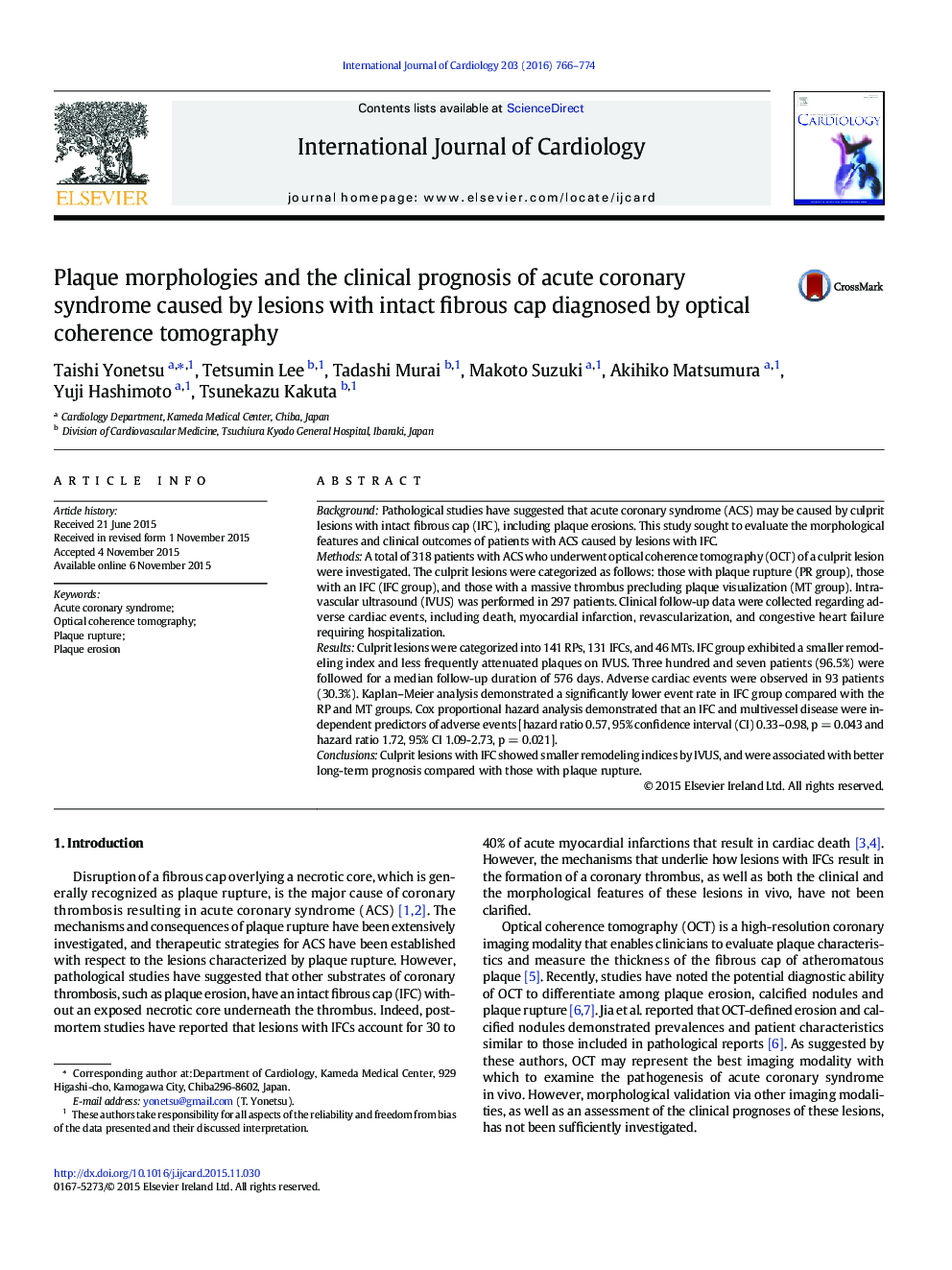| Article ID | Journal | Published Year | Pages | File Type |
|---|---|---|---|---|
| 5965716 | International Journal of Cardiology | 2016 | 9 Pages |
BackgroundPathological studies have suggested that acute coronary syndrome (ACS) may be caused by culprit lesions with intact fibrous cap (IFC), including plaque erosions. This study sought to evaluate the morphological features and clinical outcomes of patients with ACS caused by lesions with IFC.MethodsA total of 318 patients with ACS who underwent optical coherence tomography (OCT) of a culprit lesion were investigated. The culprit lesions were categorized as follows: those with plaque rupture (PR group), those with an IFC (IFC group), and those with a massive thrombus precluding plaque visualization (MT group). Intravascular ultrasound (IVUS) was performed in 297 patients. Clinical follow-up data were collected regarding adverse cardiac events, including death, myocardial infarction, revascularization, and congestive heart failure requiring hospitalization.ResultsCulprit lesions were categorized into 141 RPs, 131 IFCs, and 46 MTs. IFC group exhibited a smaller remodeling index and less frequently attenuated plaques on IVUS. Three hundred and seven patients (96.5%) were followed for a median follow-up duration of 576 days. Adverse cardiac events were observed in 93 patients (30.3%). Kaplan-Meier analysis demonstrated a significantly lower event rate in IFC group compared with the RP and MT groups. Cox proportional hazard analysis demonstrated that an IFC and multivessel disease were independent predictors of adverse events [hazard ratio 0.57, 95% confidence interval (CI) 0.33-0.98, p = 0.043 and hazard ratio 1.72, 95% CI 1.09-2.73, p = 0.021].ConclusionsCulprit lesions with IFC showed smaller remodeling indices by IVUS, and were associated with better long-term prognosis compared with those with plaque rupture.
